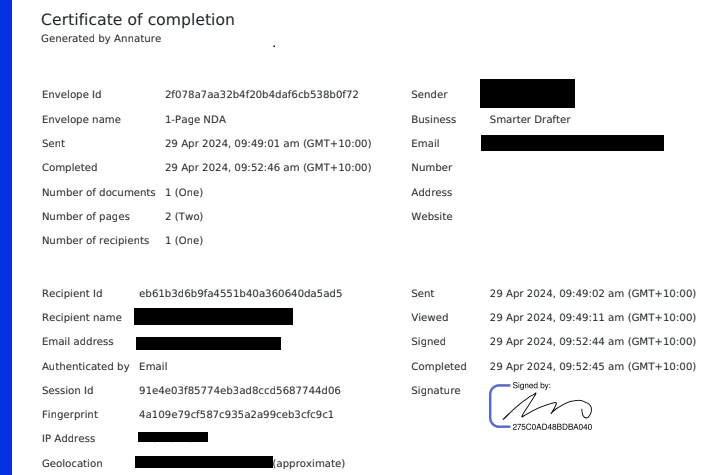eSignature Security
Learn about the security protocols for eSignatures.
The topic of security surrounding legal documents is often sensitive and is a priority for clients and law firms alike. Smarter Drafter's eSignature process emphasises and enforces this requirement, by ensuring confidentiality and authenticity. Not only that, when you're signing documents in Smarter Drafter, you can be sure that you're doing so in a secure and encrypted environment.
The links used in correspondence are secured end-to-end and every complete eSignature document is authenticated with a certificate of authenticity.
Topics covered in this article:
eSignature Security
To enforce security and legitimacy in the eSignature process, the eSignature meets several requirements:
- The eSignature is limited to the sending method. For example, if only the email is entered for a signatory from the eSignature Portal, then the secure link to sign the document is only sent via email. If the phone number is entered too, the secure link will be sent via text message as well.
- Only the required parties will receive the secure link to sign the document, and only those parties and the law firm will receive the final signed copy of the document. Required parties include signatories and witnesses.
- An option to manually sign the document electronically is presented, which allows the signee to either draw their signature or upload a picture of their signature, which would match their existing physical documents and identification.
- A certificate of authenticity is generated on eSignature completion, with a recorded timestamp, location and electronic fingerprint.

Note: The certificate of authenticity will be downloadable by the signees and the law firm from the email sent for completing an eSignature, as part of the completed document.